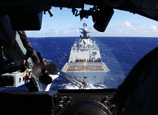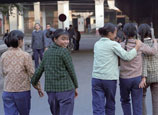
In 1932, Lu opened a clinic in Shanghai to treat epidemic fevers, chronic hepatitis and tumors, with Western diagnostics and Chinese prescriptions.
At the same time, medical books on treatments combining Chinese and Western medicine were written and published by pioneers such as Lu.
"Shanghai created a tolerant, catholic environment, where the Eastern and Western medicines got along with each other. It was the first one to do so in China," says Dr Shang.
According to the Dictionary of Chinese Medicine, almost 1,300 medical books were published in Shanghai from 1912 to 1949, accounting for 43 percent of the total publications in China.
Ding's works received awards in Germany and Italy. Many were translated and circulated in the United States and Europe, and knowledge of TCM begin to spread overseas.
As an economic and trading hub, Shanghai also incubated the TCM industry. Famous pharmacies such as Hu Qingyu Pharmacy from Hangzhou, Zhejiang Province, Li Zhongsheng Drugstore from Foshan, Guangzhou, Shi Yi Pharmacy from Jilin Province, were attracted to Shanghai.
Within a decade, Shanghai became China's biggest TCM market for domestic and international trading. In 1928, TCM exports from Shanghai reached 3.3 million bai yin (silver dollars), worth around 660 million yuan (US$106 million). That was almost 1 percent of the city's total export volume.
There were many "firsts" in TCM.
The first TCM club was founded in Shanghai by Dr Li Shuping. It is also the place where the first TCM newspaper, Medical Journal, was launched by Zhou Xueqiao. In 1921, China's first modern TCM pharmaceutical factory was built, and in the same year the country's first comprehensive TCM dictionary, China Medical Encyclopedia, was published. It took Xie Liheng and his coworkers eight years to compile it.
"The move to combine Eastern and Western medicines was first launched in the early 1900s in Shanghai. After over a century, TCM practitioners like us are still working on it," Dr Shang says.
He is dedicated to further promoting TCM internationally through standardization of prescription ingredients, using high technology, including long-distance tele-TCM diagnosis, genetic screening for health risks, and spinal heath massage performed both by skilled therapists as well equipment.
"What we're doing now is just what those TCM pioneers did more than a century ago, that is to make TCM and Western medicine merge with each other, which is where the true spirit of Shanghai TCM lies," he says.

















![]()
